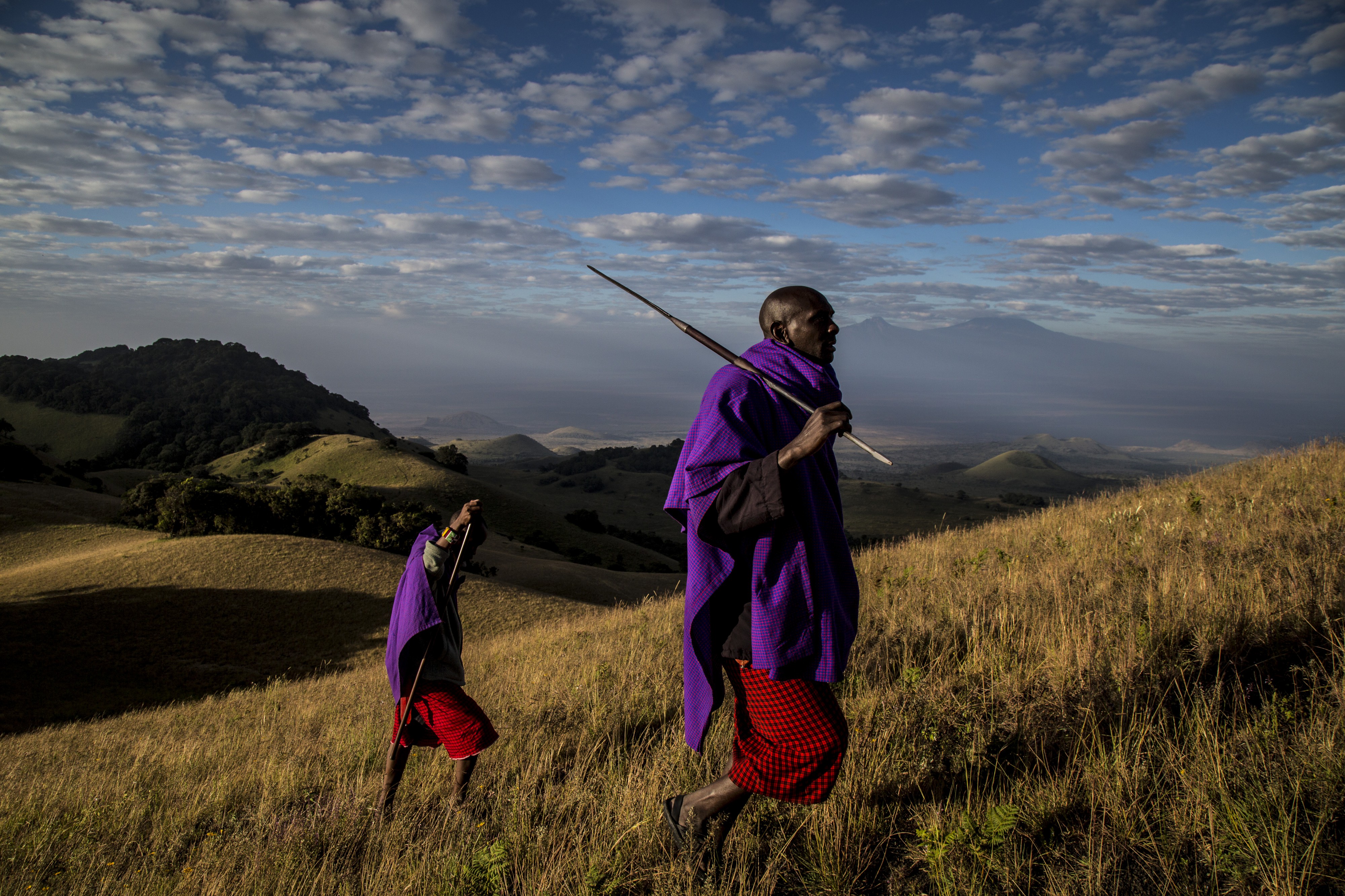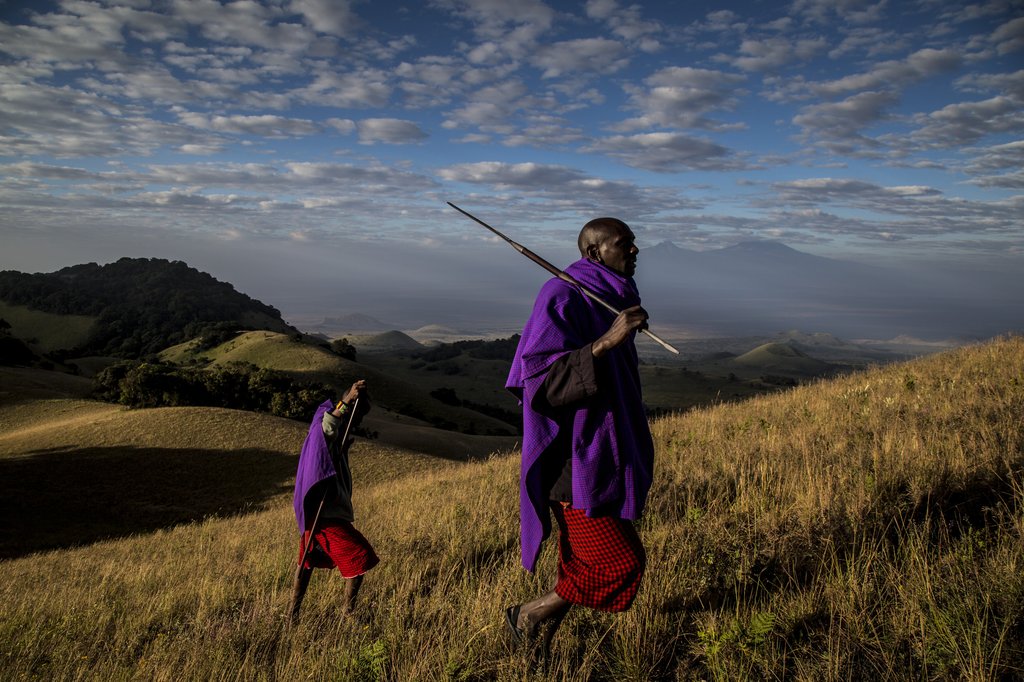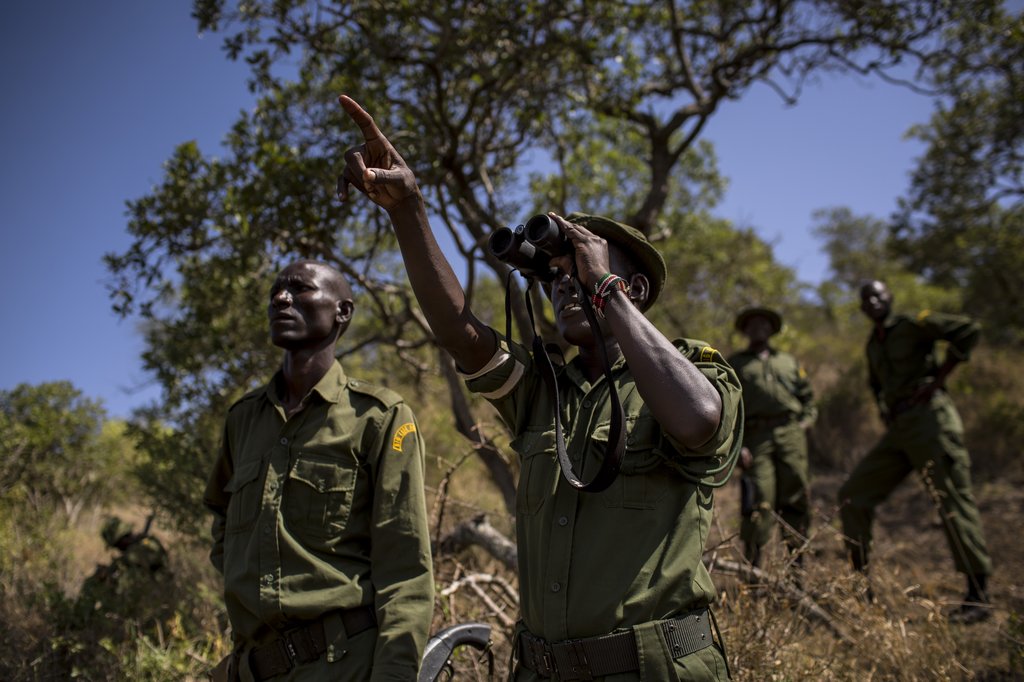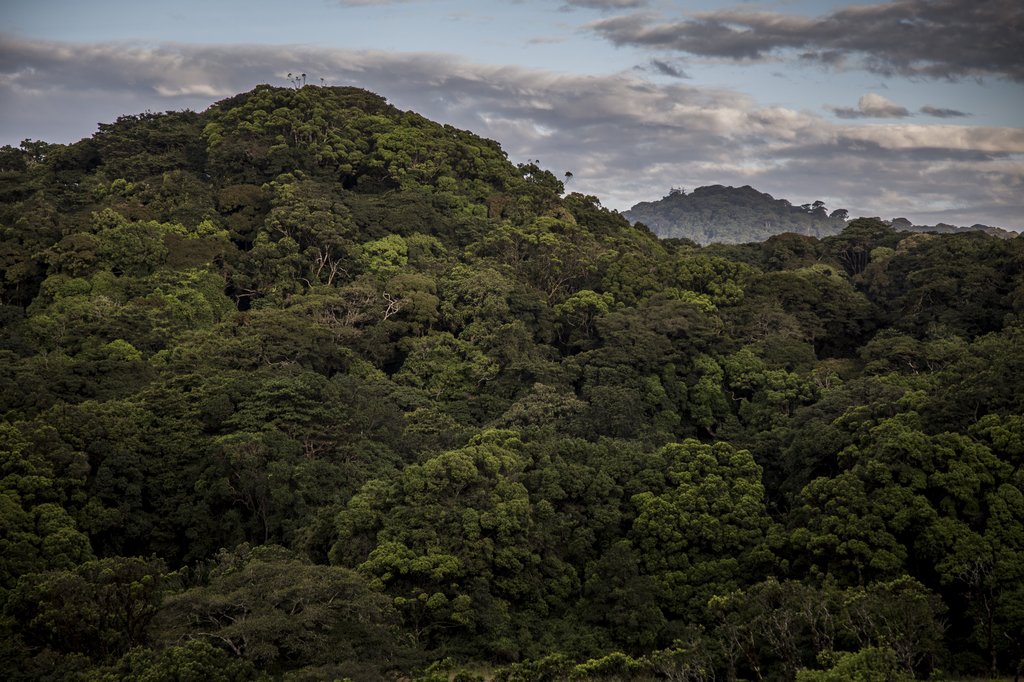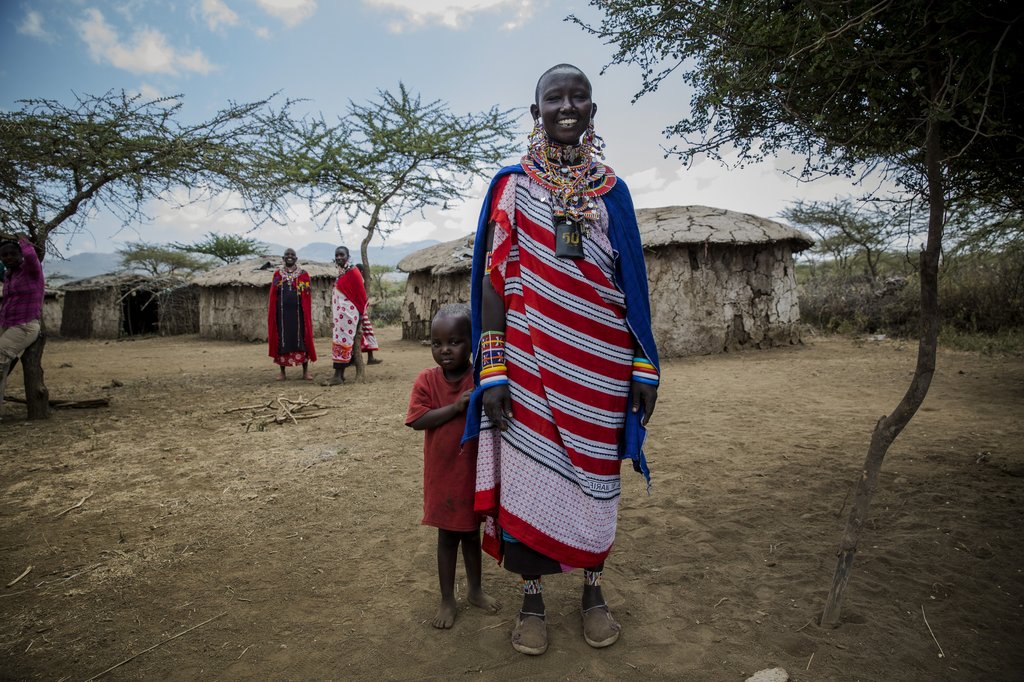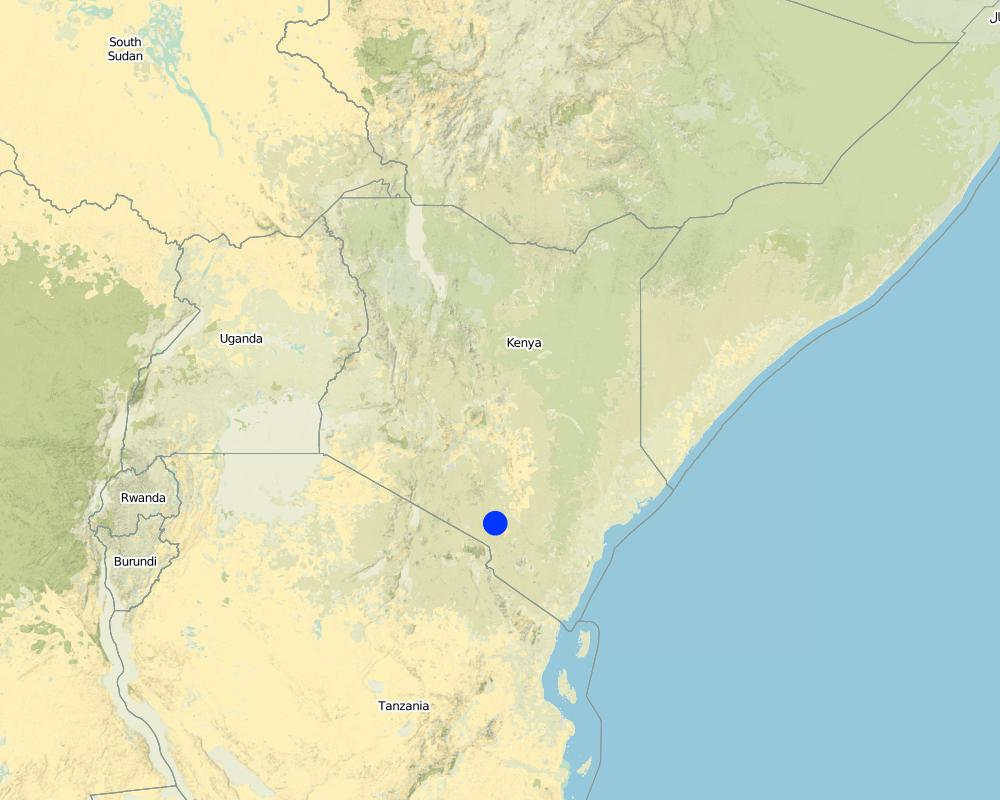Chyulu Hills Community REDD + Project [Kenya]
- Creation:
- Update:
- Compiler: Peter Tyrrell
- Editor: Christina Ender
- Reviewers: Donia Mühlematter, Hanspeter Liniger, Rima Mekdaschi Studer
approaches_3426 - Kenya
View sections
Expand all Collapse all1. General information
1.2 Contact details of resource persons and institutions involved in the assessment and documentation of the Approach
Name of project which facilitated the documentation/ evaluation of the Approach (if relevant)
Book project: Guidelines to Rangeland Management in Sub-Saharan Africa (Rangeland Management)1.3 Conditions regarding the use of data documented through WOCAT
When were the data compiled (in the field)?
28/02/201
The compiler and key resource person(s) accept the conditions regarding the use of data documented through WOCAT:
Yes
1.4 Reference(s) to Questionnaire(s) on SLM Technologies
2. Description of the SLM Approach
2.1 Short description of the Approach
The Chyulu Hills REDD+ project combines two government agencies, three local NGOs and four communities together under a unified banner, the Chyulu Hills Conservation Trust (CHCT). The objective is to set-up a 30-year ‘payment for ecosystem service’ scheme in the landscape. A main goal of the project is to improve grazing and livestock management to prevent further degradation of the rangeland and forest resources.
2.2 Detailed description of the Approach
Detailed description of the Approach:
The Chyulu Hills, in southern Kenya, are a volcanic mountain range approximately 100 km long, and form a central pillar of the much larger Tsavo-Amboseli ecosystem which constitutes several national parks, forest reserves and community-owned pastoral land. The emission reduction project established in 2011 under the REDD+ umbrella (Reducing Emissions from Deforestation and forest Degradation) covers 410,000 hectares of both community and public land around the hills. REDD+ offers financial incentives to developing countries to manage and use their forests responsibly. Payments are channelled through the Trust to support land users for quantifiably reducing emissions.
REDD+ creates financial value for the carbon stored in forests by offering incentives for developing countries to reduce emissions from forested lands and invest in low-carbon paths to sustainable development. REDD+ goes beyond simply stopping further deforestation and forest degradation by including sustainable management and enhancement of forest carbon stocks.
This area is home to 140,000 people including Maasai pastoralists to the west, and Kamba farming communities to the east. This land is widely used for livestock production; must of it under communal tenure. Recent pressures, notably increasing populations and changes in land tenure, have led to unsustainable uses of natural resources, threatening the functioning of the ecosystem, through the degradation of the rangeland and over-exploitation of forest resources. This includes cutting of trees for firewood, charcoal, uncontrolled fires, and weakening of traditional grazing management systems.
The Chyulu Hills REDD+ project aims to protect its rangeland and forest landscapes by creating an alternative income opportunity, and improving both livestock and rangeland management, while preventing the emission of over 18 million tons of carbon dioxide over the project’s 30-year lifetime.
This is the first REDD+ project in Kenya that is fully owned and managed by the local community, a vital factor in ensuring sustained impact. Through the project, land users receive financial support per hectare for maintaining or improving carbon stocks above and below ground. Previous REDD+ projects have often been criticised for not properly engaging local communities or addressing their needs.
To achieve this, the Chyulu Hills Conservation Trust (CHCT) was formed in 2015 to act as the project governing body. The Trust represents multiple stakeholders from the community, government, and local NGOs including the Maasai Wilderness Conservation Trust (MMWCT), Big Life Foundation (BLF), and the David Sheldrick Wildlife Trust (DSWT). The government is also represented through the Kenya Wildlife Service (KWS) and Kenya Forest Service (KFS), whose mandates include the Chyulu Hills National Park and the Kibwezi Forest Reserve. The national park is used on an informal basis by the communities for dry season grazing, although access is severely limited by water, and also by disease.
The communities are represented by four Maasai group ranches, who manage the land and its resources. These group ranches are areas of communally titled land. The three NGOs have the technical capacity to advise, provide strategic guidance and assist in implementation of the project activities. They are already involved in helping communities to develop and manage conservation areas, and to improve sustainable use of natural resources.
Proceeds from the sale of Voluntary Emission Reductions (VERs) flow through the CHCT to initiatives/projects which benefit the community and environment. Early in 2017 the first verification was completed, and shortly afterwards the first marketable carbon credits went on sale, providing income to the CHCT for protecting and improving their carbon stock.
To ensure equitable and transparent sharing of proceeds from carbon sales, a revenue allocation model was implemented to fund (i) office and project costs, (ii) discretionary sub-projects, and (iii) to provide strategic investments to counter drivers of deforestation and land degradation.
The proposed investments into the CHCT area to improve rangeland condition comprise several components. The first component is to support grazing management plans to help restore governance over resources, and ensure sustainable use. This should encourage the recovery of perennial grasses, increase grass cover, and create a heterogeneous forage base. The second focus is value addition to beef marketing through collaborative partnerships. This should encourage pastoralists to focus on management of the rangelands to support the production of higher quality cattle. In the long run this will increase revenue generation for livestock farmers, and stimulate the communities to manage their rangeland better.
2.3 Photos of the Approach
2.5 Country/ region/ locations where the Approach has been applied
Country:
Kenya
Region/ State/ Province:
Kajiado and Makueni
Further specification of location:
Chyulu Hills
Map
×2.6 Dates of initiation and termination of the Approach
Indicate year of initiation:
2011
Comments:
The approach began in 2011, but the REDD+ project's form start date is September 2013. Please see the timeline figure.
2.7 Type of Approach
- project/ programme based
2.8 Main aims/ objectives of the Approach
Provide carbon based funding to a local community trust to protect and improve the management of the Chyulu Hills and the surrounding ecosystem.
This project aims to:
- Deliver community benefits (such as health care, school bursaries, and income generating activities).
- Enhance forest protection (through protection, management and monitoring).
- Protect biodiversity.
- Restore degraded rangelands (improved livestock management and marketing).
- Enhance local governance.
2.9 Conditions enabling or hindering implementation of the Technology/ Technologies applied under the Approach
social/ cultural/ religious norms and values
- hindering
Consensus needs to be built between all community members who own and manage land under a communal title. This requires many meetings at various scales and with multiple stakeholders to ensure that consensus is reached, and that the resulting project is fair for all.
availability/ access to financial resources and services
- enabling
Financial resources were made available at the start by two international NGOs, namely the African Wildlife Foundation (AWF); and Conservation International (CI), which are not on the formal Board of CHCT. This allowed for the expensive process to be undertaken, including development of the Trust, and the process of carbon stock validation and sales.
- hindering
The sale of carbon credits is a limiting factor in revenue generation to run the project and implement activities.
institutional setting
- enabling
Creation of the Chyulu Hills Conservation Trusts as a landscape institution ensures that all partners (community, government and NGO's) act for the good of the landscape, manage it collectively, and develop consensus on this approach.
collaboration/ coordination of actors
- enabling
The Chyulu Hills Conservation Trust has a project office in the landscape and a Board of Trustees overseeing project implementation which greatly increases collaboration of actors with joint work plans.
legal framework (land tenure, land and water use rights)
- hindering
Different parts of the landscape are managed by various authorities, such as National Park and Forest reserves by the government agencies, Kenya Wildlife Service and Kenya Forest Service respectively. The remaining area is under community land, which is titled as group ranches, a form of community land tenure in Kenya. The division between the two groups, the government and the community, can potentially cause conflict over access to forage, forest resources and water use.
knowledge about SLM, access to technical support
- enabling
The incorporation of a diverse set of NGOs into the project brings a range of SLM options and access to technical support.
3. Participation and roles of stakeholders involved
3.1 Stakeholders involved in the Approach and their roles
- local land users/ local communities
Kuku Group Ranch
Kuku A Group Ranch
Mbirikani Group Ranch
Rombo Group Ranch
The communities are the owners of livestock and natural resources. They are nee in the formulation of strategies, in particular grazing management, in their areas.
- NGO
Maasai Wilderness Conservation Trust
Big Life Foundation
David Sheldrick Wildlife Trust
These three NGO oversee the management of natural resources (each has agreements with the respective communities) and provide support for administration of the grants, technical and implementing expertise, and strategy development. They each operate in distinct geographical areas across both community and public land.
- national government (planners, decision-makers)
Kenya Wildlife Service
Kenya Forest Service
These two stakeholders are responsible for the management and project implementation within the officially gazetted protected areas. The Kenya Forest Service is instrumental in the national decision making and policy for the national REDD + programme.
- international organization
Conservation International
Functions as an advisory board member, providing strategic and technical guidance.
3.2 Involvement of local land users/ local communities in the different phases of the Approach
| Involvement of local land users/ local communities | Specify who was involved and describe activities | |
|---|---|---|
| initiation/ motivation | interactive | Initial conversations were motivated by two international NGOs (Conservation International and the African Wildlife Foundation). The project partners then held a large number of community meetings under the principle of free prior and informed consent (FPIC) to develop a unified platform to begin the process of investigating a mechanism in order to create an inclusive and fair REDD+ project (mainly lead by KWF). |
| planning | interactive | Planning of the project activities to be carried out under the REDD+ project was undertaken through a wide consultative process led by Conservation International, via community meetings and key information interviews. These are all captured in the Project Development Document (PDD) freely available online. |
| implementation | interactive | Implementation of the project was spearheaded by the project partners with technical and strategic guidance from Conservation International, including the validation, verification and initial sales of carbon credits. Local communities were closely involved in the development of the revenue allocation plan, the Trust structure, and development of the project activities and work plan. |
| monitoring/ evaluation | interactive | M&E is conducted by all involved NGOs and government agencies, and coordinated by one NGO currently holding the Project Office. Community members are integral to the collection and interpretation of data during this process. |
3.4 Decision-making on the selection of SLM Technology/ Technologies
Specify who decided on the selection of the Technology/ Technologies to be implemented:
- all relevant actors, as part of a participatory approach
Explain:
Activities under this plan are implemented through both SLM experts and communities. The grazing management and livestock production activities originate from conversations between the communities, NGO partners and experts on rangeland management and livestock marketing and sale. These technologies are still in the early stages of development.
Specify on what basis decisions were made:
- evaluation of well-documented SLM knowledge (evidence-based decision-making)
- research findings
- personal experience and opinions (undocumented)
4. Technical support, capacity building, and knowledge management
4.1 Capacity building/ training
Was training provided to land users/ other stakeholders?
Yes
Specify who was trained:
- land users
- field staff/ advisers
If relevant, specify gender, age, status, ethnicity, etc.
A significant number of training has taken place so far. One example is training local women on grass seed bank management and farming, as well as building capacity of local scouts in wildlife data collection.
Form of training:
- on-the-job
- demonstration areas
4.2 Advisory service
Do land users have access to an advisory service?
No
4.3 Institution strengthening (organizational development)
Have institutions been established or strengthened through the Approach?
- yes, greatly
Specify the level(s) at which institutions have been strengthened or established:
- local
- regional
Describe institution, roles and responsibilities, members, etc.
The Chyulu Hills Conservation Trust was established through this approach to bring together the two government agencies, the three local NGOs, and four community groups. The organisation is continually being strengthened with direct funding provided to the project office.
Specify type of support:
- financial
- capacity building/ training
- equipment
Give further details:
One of the local NGOs has been appointed as in-charge of the Project Office, holding the responsibility for oversight and coordination across all partners, as well as management of the verification and audit events.
4.4 Monitoring and evaluation
Is monitoring and evaluation part of the Approach?
Yes
Comments:
The REDD + carbon scheme documents forest, woody cover, and soil carbon, and is the main monitoring mechanism. Monitoring of rangeland condition, such as species composition, grass quality and quantity and ground cover is undertaken to evaluate the effect of changes in grazing management and livestock marketing.
If yes, is this documentation intended to be used for monitoring and evaluation?
No
4.5 Research
Was research part of the Approach?
Yes
Specify topics:
- economics / marketing
- ecology
Give further details and indicate who did the research:
Research was conducted to establish the potential of the landscape for carbon sequestration for the REDD+ scheme.
5. Financing and external material support
5.1 Annual budget for the SLM component of the Approach
If precise annual budget is not known, indicate range:
- 100,000-1,000,000
Comments (e.g. main sources of funding/ major donors):
The initial implementation of the project cost more than 1 million USD over the course of six years. This was used to build community consensus, establish trust, measure carbon stocks within the areas and obtain validation and verification under two internationally acknowledged standards (the Verified Carbon Standard, and the Climate, Community and Biodiversity Standard.
5.2 Financial/ material support provided to land users
Did land users receive financial/ material support for implementing the Technology/ Technologies?
Yes
If yes, specify type(s) of support, conditions, and provider(s):
Implementation of the project was supported through funding by two international NGOs, and enhanced by project partners.
5.3 Subsidies for specific inputs (including labour)
- none
5.4 Credit
Was credit provided under the Approach for SLM activities?
No
5.5 Other incentives or instruments
Were other incentives or instruments used to promote implementation of SLM Technologies?
No
6. Impact analysis and concluding statements
6.1 Impacts of the Approach
Did the Approach empower local land users, improve stakeholder participation?
- No
- Yes, little
- Yes, moderately
- Yes, greatly
The Approach ensures communities are the principle beneficiaries of funding received by the Trust; the technologies implemented are for improved rangeland management.
Did the Approach enable evidence-based decision-making?
- No
- Yes, little
- Yes, moderately
- Yes, greatly
The Approach monitors rangeland and forest resources, including vegetation, carbon stores and biodiversity, which can then be used by the Trust for evidence based decision making.
Did the Approach help land users to implement and maintain SLM Technologies?
- No
- Yes, little
- Yes, moderately
- Yes, greatly
The Approach provides technical and strategic expertise to communities to implement technologies at the spatial scale relevant to land management.
Did the Approach improve coordination and cost-effective implementation of SLM?
- No
- Yes, little
- Yes, moderately
- Yes, greatly
The Trust brings together community, government and NGO stakeholders in the landscape to improve coordination under joint work plans.
Did the Approach mobilize/ improve access to financial resources for SLM implementation?
- No
- Yes, little
- Yes, moderately
- Yes, greatly
The Approach generates revenue through the sale of carbon credits, which is allocated to projects through the Trust and the revenue allocation model.
Did the Approach build/ strengthen institutions, collaboration between stakeholders?
- No
- Yes, little
- Yes, moderately
- Yes, greatly
Through the creation of the Chyulu Hills Conservation Trust there is a new institution to build collaboration.
Did the Approach lead to employment, income opportunities?
- No
- Yes, little
- Yes, moderately
- Yes, greatly
Yes, this approach has provided more employment to the local communities, including transfer of new skills.
6.2 Main motivation of land users to implement SLM
- increased production
The condition of the rangeland within the area has deteriorated over recent years. There is a recognition among land-users that an approach is needed at the correct scale to restore and mange the rangelands.
- reduced land degradation
Land degredation is a wide-scale issues, and this approach supports communities to develop grazing managment plans and restoration.
6.3 Sustainability of Approach activities
Can the land users sustain what has been implemented through the Approach (without external support)?
- yes
If yes, describe how:
The collaborative nature of the project, and the establishment of the Trust allows the community to sustain the approach due to the ongoing support of local NGOs and government. If the CHCT cannot sell Carbon Credits via the REDD+ scheme, then there will be severe limitations on the ability of the project to implement activities.
6.4 Strengths/ advantages of the Approach
| Strengths/ advantages/ opportunities in the land user’s view |
|---|
| Communities are directly represented in the implementation of activities through representatives |
| There are clear potential financial benefits derived from the project through internal granting, community projects, and employment. |
| The approach will help improve the production of the rangeland and value of beef based products. |
| Strengths/ advantages/ opportunities in the compiler’s or other key resource person’s view |
|---|
| Collaborative approach to Payments for Ecosystem Services (PES) which includes all the stakeholders required for successful implementation, including local representation, technical expertise, and national government agencies. |
| The approach tackles a range of drivers that have led to resource over exploitation and degradation, and has a clear plan and revenue allocation strategy to ensure an effective and equitable implementation of technologies to tackle these drivers. |
6.5 Weaknesses/ disadvantages of the Approach and ways of overcoming them
| Weaknesses/ disadvantages/ risks in the land user’s view | How can they be overcome? |
|---|---|
| Perceived imposition of grazing and rangeland management from NGOs, community leaders and the Trust Collaborative | Development of technologies to be implemented under this approach through the Group Ranch committees and local consultation with landowners. |
| Weaknesses/ disadvantages/ risks in the compiler’s or other key resource person’s view | How can they be overcome? |
|---|---|
| Dependency on the REDD+ funding channels may lead to financial constraints if carbon credit sales do not happen. | Develop alternative financing mechanism beyond the sale of carbon credit. |
7. References and links
7.1 Methods/ sources of information
- interviews with SLM specialists/ experts
Interview with key staff at CI
- compilation from reports and other existing documentation
Reports, documents and fact sheets
Links and modules
Expand all Collapse allLinks
No links
Modules
No modules


